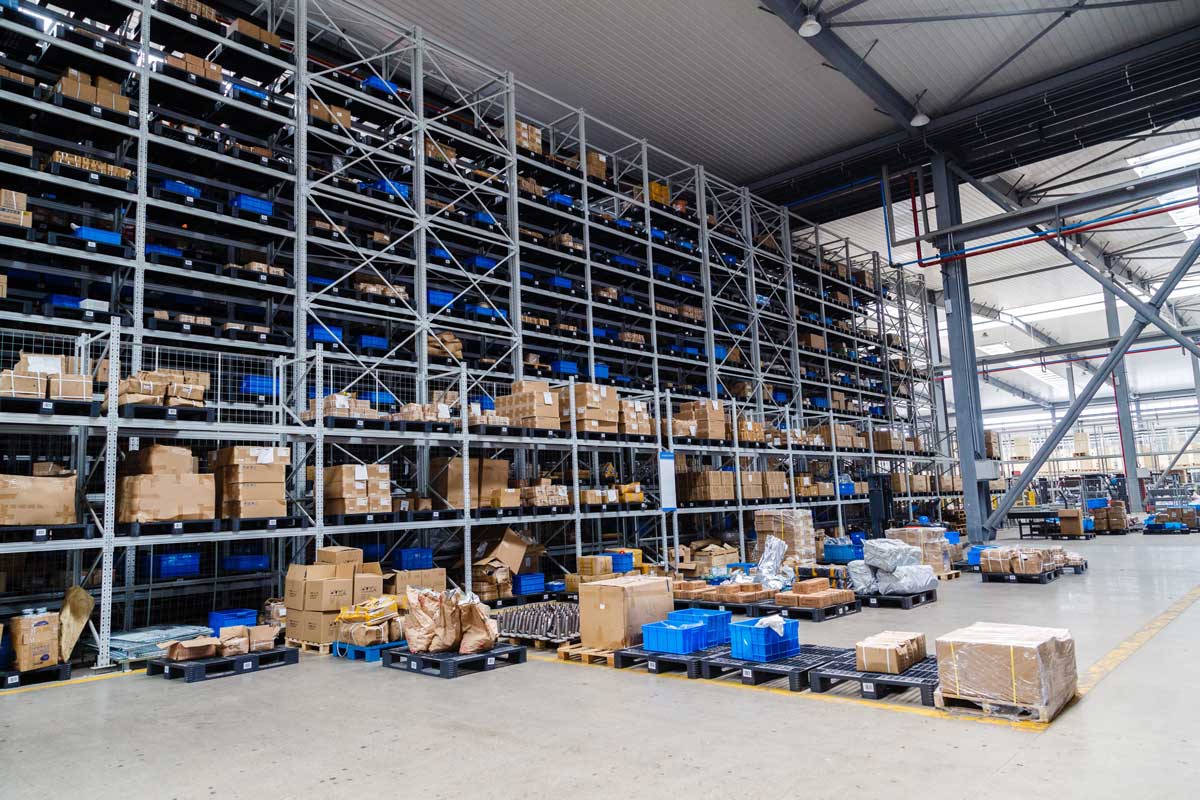I can remember sitting in my high school precalculus course and taking a look at the board and rattling off an answer to my teacher. He would look at me and say, “You’re right, but you need to show me how you got your answer.” I would argue that it didn’t matter about how I got the answer, but that it was right. And he would make me go up to the board and teach the whole class how to get the same answer.
Little did I know that I was being taught an extremely valuable lesson that would help me years down the road. I hated the extra writing, but I do appreciate my teacher and the lesson he taught me. The real magic of showing my work was the understanding of the steps I needed to take to go from the problem to the answer. Most people are so focused on the answer, they miss the process in general.
Amazon sellers are no different than the high school version of me. They want to know how to find great products to sell on Amazon through online arbitrage or wholesale accounts. They are so worried about finding the item, they forget that the magic is in the process.
And that’s where reverse sourcing comes in.
You most likely have never heard of the concept, but it’s a great way to take an answer and show the work on how another seller found it. It opens a new perspective on how to find wholesale items to sell on Amazon and it gives you new opportunities for growth and expansion.
I’m going to start by explaining the process of reverse sourcing, why it works, how to do it, and even give you some ways to make your life a little bit easier.

What Is Reverse Sourcing?
Reverse sourcing is pretty simple. It’s sourcing, but instead of starting with the store and trying to find a deal (like you do in online arbitrage or retail arbitrage), you start with an Amazon listing and work backwards to find out places to source that item.
You are probably sitting there and scratching your head right now. Why would I start with a product that someone else is already selling?
Good question. And that question has the answer already embedded in it.
The product is already selling.
Instead of searching through hundreds of products that might or might not sell, you are focusing on products that do sell. You just need to find the source to purchase the products from and then you have an opportunity to make some money.
That’s the power of reverse sourcing. You know a product is already selling (and making money) and you just need to find where to source that item (typically in a wholesale format). Plus you are doing the opposite of the other sellers on Amazon, giving you a competitive advantage.
Why the Reverse Sourcing Strategy Works to Find Suppliers
It all goes back to your microeconomics course in high school or college and that fancy Latin phrase ceteris paribus. Ceteris paribus means “all other things being equal” and is a main driver in supply and demand curves (that part of class you most likely fell asleep during). Let me give you a little bit of a review since I used to be a college economics professor:
If everything is equal between products that are for sale, consumers will naturally go with the lowest price option. They do this because it is in their best interest.
Now I’ll translate it over to the world of Amazon selling: If you can find a product that is exactly the same as one that is already selling and offer a lower price, buyers will buy from you because it’s in their best interest to do so.
The key is to find a way to source the products at a lower cost point. And you can do that through building relationships, ordering in larger quantities, buying multiple products from the same supplier, or taking a lower profit margin than the other sellers on the listing.

How to Find Wholesale Suppliers Using Reverse Sourcing
I’m a firm believer in teaching someone how to do something the hard way, then showing them the easier way to do it. That way you understand the process and know why something actually works, instead of just having a tool do it for you. This kind of knowledge not only helps you understand this process, but also gives you the concepts needed to find new and different ways to source other items. And you also understand why a tool is valuable to save you time and speed up the sourcing process.
So let’s dive into the process of finding suppliers using reverse sourcing.
Step 1 – Find a category you would like to sell in
For most sellers, you have a niche or a category you like to sell in on a regular basis. I have always been a big toy seller, but I know others that specialize in health and beauty products. It’s all based upon your personal preference and comfort level.
Step 2 – Find a product you would like to source
Once you have your category narrowed down, it’s time to start finding a product you would like to sell. I like to do this by creating a series of filters (or parameters) that I use to determine if a product would be a good fit for my Amazon business. Here is an example of one:
- Product must have fewer than 5 sellers on the listing
- Product must have a price point over $20
- Product must be under 10 pounds or a 12″ x 12″ x 12″ cubic box
- Product must have a sales rank (BSR) between 10,000 and 100,000
Then I start scrolling through listings to see which of them would fit these parameters. This part takes quite a bit of time, but it’s all worth it once you find that one product that can make you some serious money.
Step 3 – Figure out if there is a wholesale connection
You have found the product of your Amazon selling dreams, but now you have to find a place to source it from on a regular basis. And you are hoping this place is a wholesale location.
To check to see if there is a wholesale connection, I like to dive into the sellers on the listing and see what other types of products they are selling. If you see a catalog of items related to the same category and niche, you might be onto a possible wholesale opportunity. If you find that they only have a few in stock and listings that might span multiple categories, you might have stumbled across someone who sources via retail or online arbitrage.
Step 4 – Find a wholesaler and check for pricing
Now that you have found a possible product and you have a good idea that it is sourced via wholesale, it’s time to find a place to source it from.
This typically starts with a Google search for that product plus the word wholesale. It’s not an extremely efficient way, but it gives you a starting point to make some calls and to browse through a few catalogs.
If you are able to find a possible wholesale source, you then contact them to see the pricing on that item.
Step 5 – Repeat the process
If you can source that product from a wholesaler, great! If not, you need to start the process back at step #2. Repeat until you find a product that fits your selling parameters and has a wholesaler that you can source from at a reasonable price point to be able to make a profit.
Make Reverse Sourcing Easier With Tactical Arbitrage
If you tried the method above, my guess is you spent a few hours and didn’t have a lot of luck finding any deals. It’s a time-consuming process that doesn’t yield a ton of results unless you invest a lot of time and effort. And if you are like most Amazon sellers, time is not something you have to waste on non–money making activities.
That’s where a software like Tactical Arbitrage comes in handy. It allows you to automate the process of spending hours looking through listings and lets you focus on just looking at the products that have a real possibility of being a money maker.
There are a few specific parts of the software that can make your reverse sourcing that much easier:
Reverse Search
Instead of searching Google for possible sites to source from, you can use Tactical Arbitrage to do a reverse search. All you need to do is to paste the UPC code into Tactical Arbitrage and let it do the rest. Once it is done, you will have a list of possible places to source your item and the price of each location. I recommend doing this after you have a list of UPC codes of possible products you want to source via wholesale.
Wholesale Search
I’m going to mess with your mind for a minute. Sometimes the best way to go backwards is to start going forward (this is why I said it’s important to understand the concepts).
If you are looking for a place to start finding possible sellers who are using wholesalers to source their products, you can start by finding a wholesaler. The wholesaler isn’t going to give you a list of their customers, but they will give you a list of their products. That plus Tactical Arbitrage will give you the ability to find the listing on Amazon and then you can start looking at the sellers on those listings. Odds are these sellers are also selling other products via wholesale sourcing, so it’s a great place to start your search (then use Reverse Search to find out if there are cheaper places to source from).
These are just two of the ways you can use Tactical Arbitrage to reverse source items to sell on your Amazon account. There are multiple other features that can be utilized once you get into the software and start playing around with the different tools and features.
I recommend getting a free trial of Tactical Arbitrage and seeing if you can find your first product through reverse souring. Once you do, the sky’s the limit with the number of possible products you can find.
Final Thoughts
Reverse sourcing is like this secret weapon that utilizes the process of sourcing, but in a different and unique way where you focus on finding the product first and then find the place to source the product. Doing this in a reverse fashion helps you find products that are already selling and work backwards.
You can choose to do it the manual way, but you’ll have better results (and find more products) if you let a tool like Tactical Arbitrage do the heavy lifting. It’s like having a personal assistant that knows all the shortcuts and that can work 24/7 for you.
So, here’s my two cents: Dive into this reverse sourcing adventure.
Don’t just take my word for it; grab a free trial of Tactical Arbitrage and see what you can find.
Trust me.
Once you get the hang of this reverse sourcing game, there’s no limit to the number of items you can find and the money you can make.

